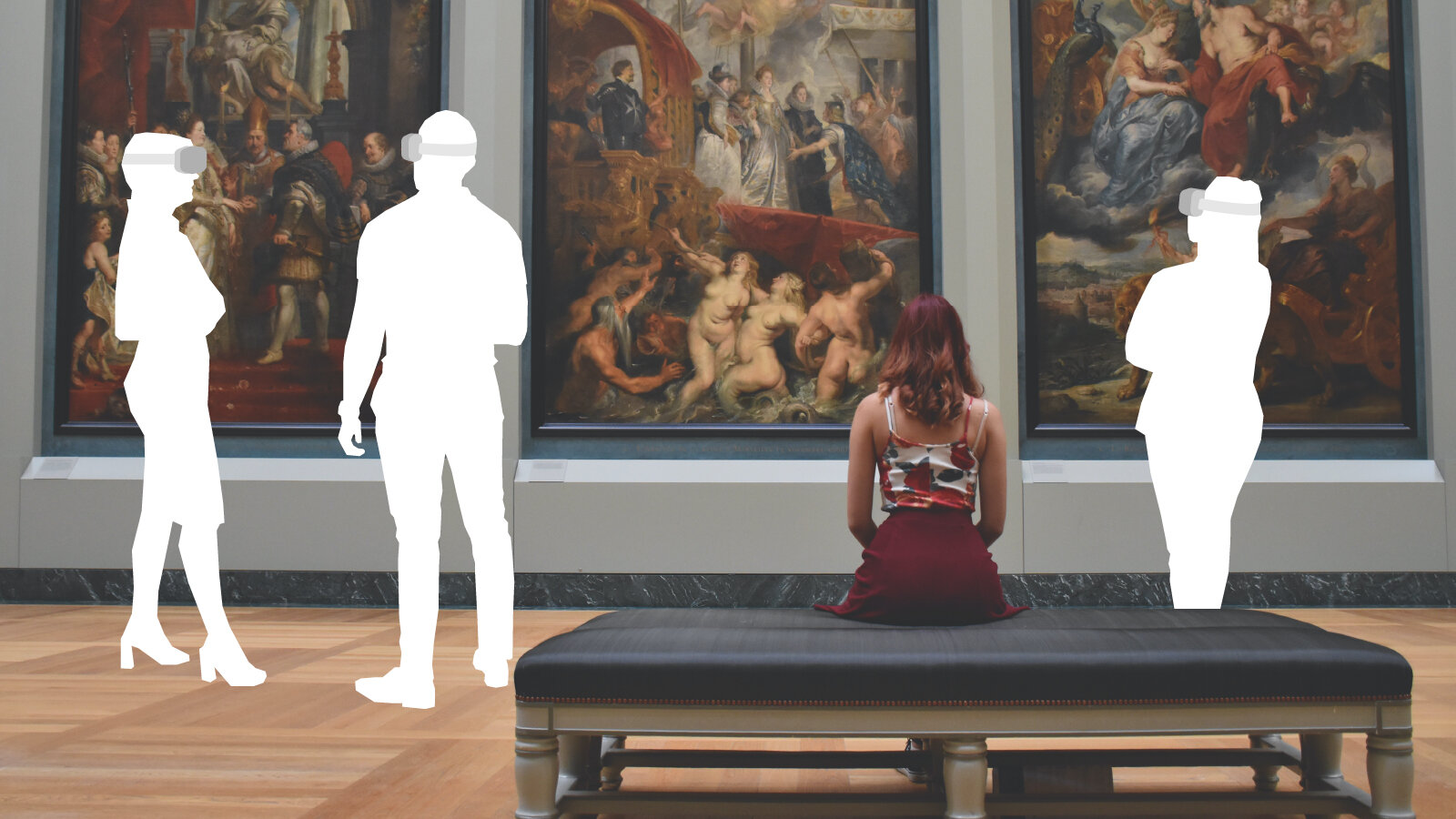Research
Verbund, led by Chemnitz University of Technology, is researching solutions for the combined use of virtual reality and telepresence robotics to improve the sense of presence of distant people in real environments
-
Photo graphic: Jacob Müller (Image source: Pexels, Una Laurencic)
Long-distance communication between people is becoming more and more important in a globalized world, as people often live and work in different places and therefore have to be increasingly mobile. The result: Their social network of relationships also stretches across an ever-expanding geographical area. Current telecommunications technologies play an important role here, in that they expand the boundaries of our environment, at least temporarily, by conveying corresponding sensory impressions. However, they do not create the impression associated with positive feelings of actually being together – i.e. spatially present – and sharing real events together.
While newer interactive technologies can enable a sense of presence and participation, they also have limitations. With virtual reality (VR), i.e. “immersing” in a different environment with the help of VR glasses, the impression of physical proximity can be created. However, VR does not allow participation in remote environments and thus participation in a real event. However, this enables telepresence robotics (TPR), which allows a robot to be controlled in a remote room by transmitting a two-dimensional camera image of the environment. A combined use of both approaches could create a new quality of telepresence interaction.
From telecommunications to telepresence interaction
A research network led by the Professorship of Ergonomics and Innovation Management (Head: Prof. Dr. Angelika Bullinger-Hoffmann) at Chemnitz University of Technology is dealing with this. In the “Tele-Verbundenheit” project, which also includes the professorship for production systems and processes (Head: Prof. Dr. Martin Dix) at the TU Chemnitz, the Institute for Sociology at the Friedrich-Alexander University Erlangen-Nuremberg and the company Die floors GmbH from Osnabrück and YOUSE GmbH from Berlin are involved, practical solutions for the combined use of virtual reality and telepresence robotics in social contexts are being examined.
“While research and development work in the field of VR-based collaboration is currently focusing primarily on the digitization and transmission of people as virtual images, so-called avatars, we are going one step further and considering the inclusion of the real environment. This is the only way to implement scenarios that enable people who are physically distant to participate in real events,” reports Dr. Frank Dittrich, research associate at the Professorship of Ergonomics and Innovation Management, who initiated the project. “The use of real-time capable immersive image transmissions, which can be experienced using VR glasses, can be a possible approach here,” Dittrich continues. Therefore, in addition to pure stereoscopic video transmission, the researchers will also experiment with the combination of 3D-capable technologies such as depth sensors.
Focus on the human factor: Mechanisms of action of experienced presence and social proximity as a research goal
In addition to researching technical approaches, one of the main goals of the project is to consider social science issues. In this way, the researchers want to determine the effect between the perception of virtual presence and social proximity and connectedness. For this purpose, the technology is to be tested in practical use. Since cultural experiences in particular are often shared as special social moments, the researchers want to test the technologies in the field, for example when visiting museums. The European Capital of Culture 2025 Chemnitz GmbH and the Chemnitz Art Collections are supporting the research project as associated partners. “Because improved telepresence technologies not only offer opportunities for interpersonal exchange, but could also have a positive effect on cultural participation in the future. People who are denied real visits for various reasons could still participate virtually. This also opens up the prospect of making regional cultural sites globally accessible in a completely new way,” says project coordinator Dorothea Langer from the Professorship of Ergonomics and Innovation Management.
Keyword: Funding Guideline “Proximity over distance – Enabling interpersonal connection with interactive technologies“
The project is being funded from April 2023 to March 2026 by the Federal Ministry of Education and Research with around one million euros as part of the funding guideline “Proximity over distance – Enabling interpersonal connection with interactive technologies”. The aim of the funding is to provide new concepts for innovative interactive technologies and products and services based on them, which enable people close to them to participate in their lives over geographical distances and strengthen the bond with these people. With the help of new technology-supported forms of interaction, the maintenance of meaningful social relationships should be made easier, which in turn contributes to increasing individual resilience and quality of life.
Further information granted by Dorothea Langer (project coordinator), telephone +49 (0)371 531-32218, e-mail [email protected].
Mario Steinebach
04.05.2023
